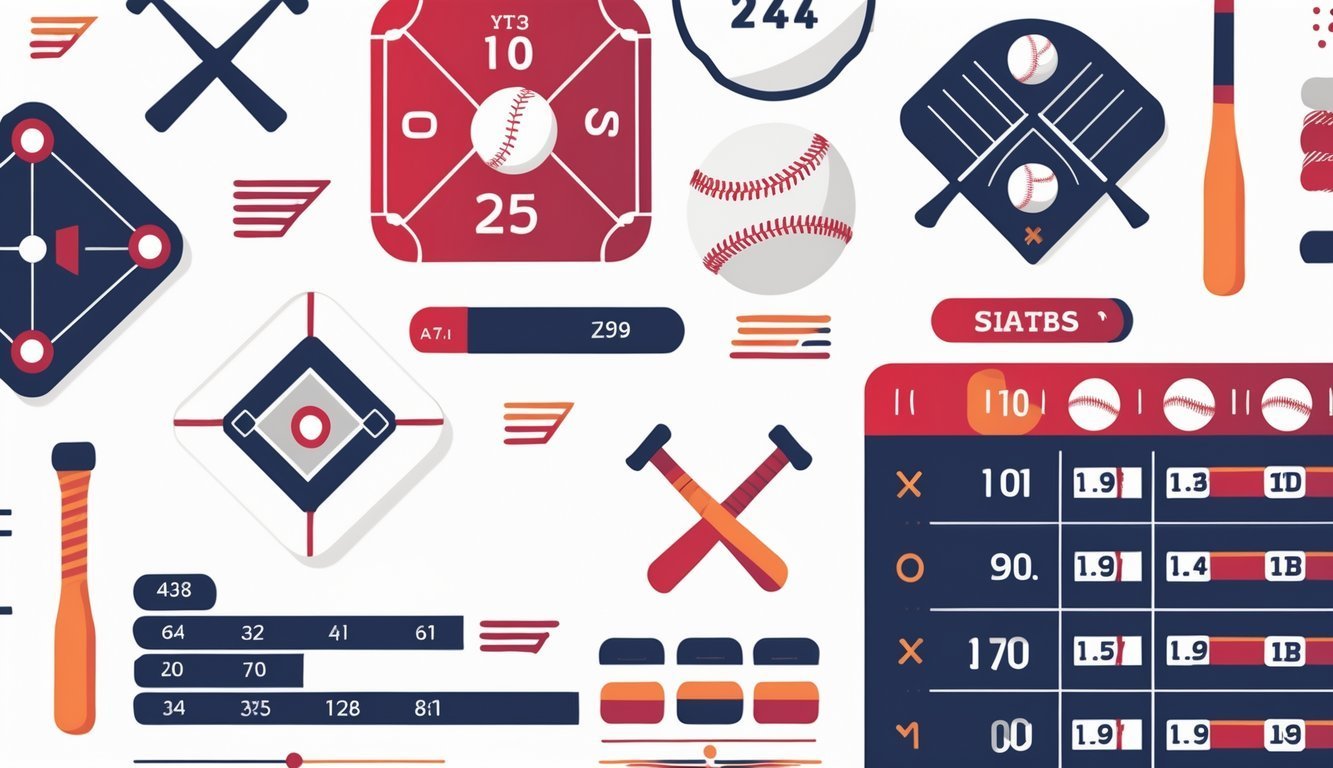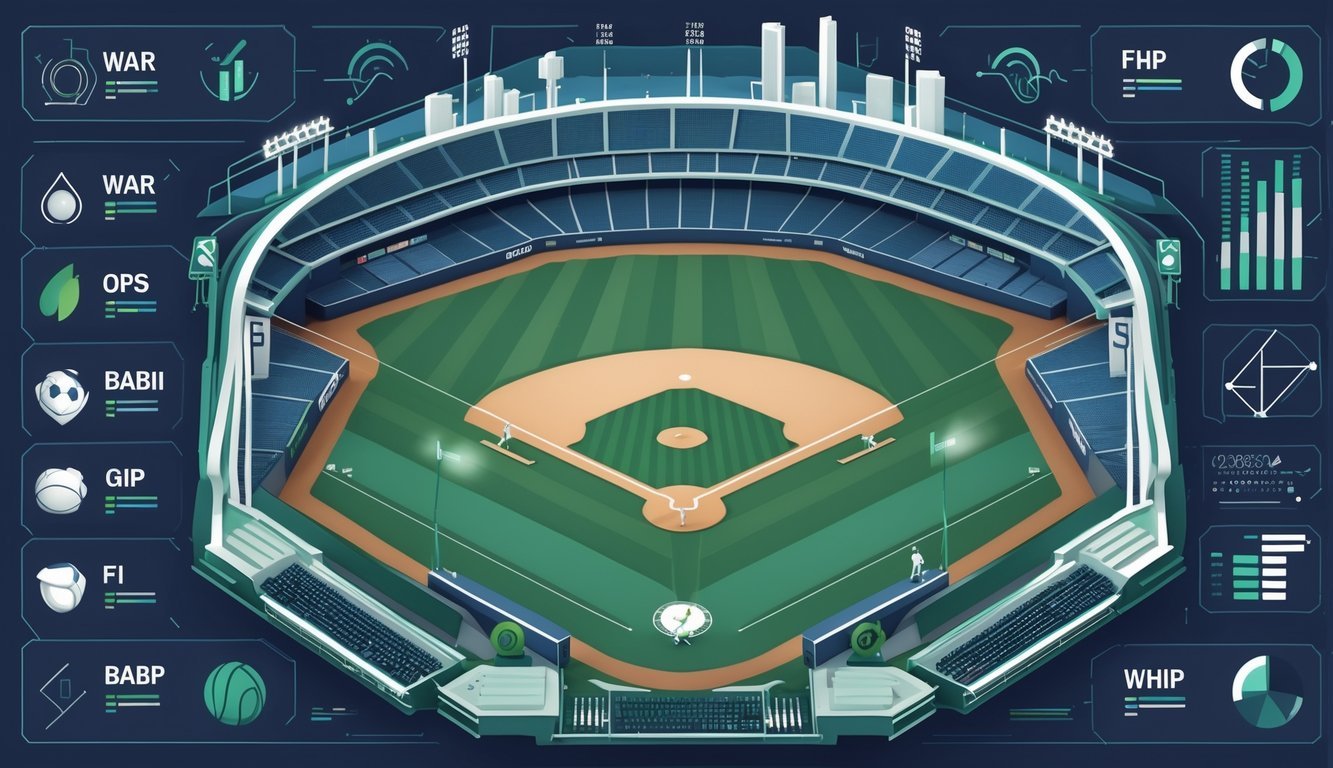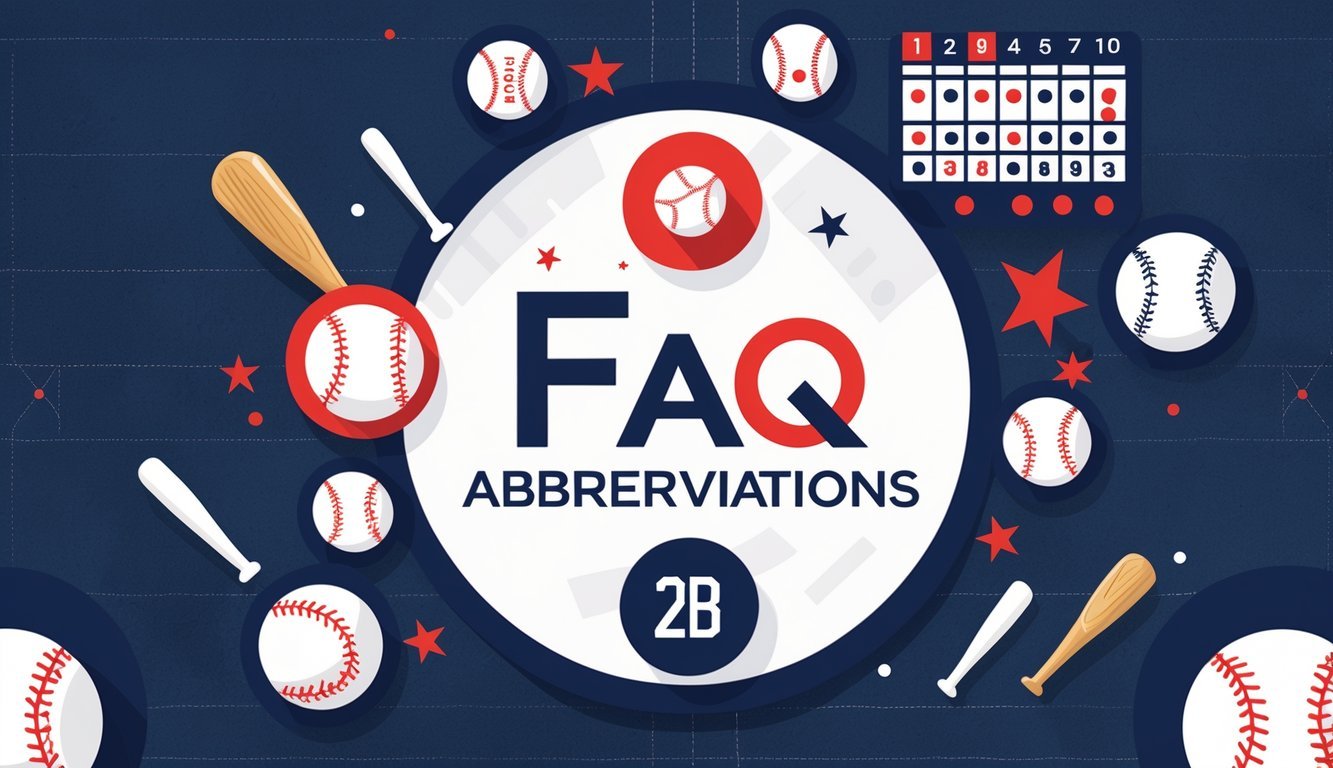PsychNewsDaily Publishers
100 Summit Drive
Burlington, MA, 01803
Telephone: (320) 349-2484
PsychNewsDaily Publishers
100 Summit Drive
Burlington, MA, 01803
Telephone: (320) 349-2484
Baseball statistics utilize abbreviations to represent player performance metrics, including batting averages, earned run averages, and fielding percentages, enhancing understanding of the game.

Baseball throws a ton of numbers your way, and those numbers always come with abbreviations that can seem baffling at first. If you want to get a handle on the game, picking up these baseball stat abbreviations is honestly one of the best ways to start.
These abbreviations let you size up a player’s performance fast and follow the action without slogging through long-winded explanations.
You’ll spot the basics like AB for At Bats, H for Hits, and AVG for Batting Average—simple, right? But then there are quirky ones like GIDP (Ground Into Double Play) or XBH (Extra-base Hit) that go a bit deeper. Once you get these down, watching, reading, or even talking baseball just feels way more interesting.
Stick with this post, and you’ll start to recognize the main abbreviations used in baseball stats. You’ll feel a lot more confident using them to follow the game’s twists and turns. Whether you’re just a casual fan or someone who’s curious, these little codes will finally start making sense.

Baseball stats rely on loads of abbreviations to help you get a quick read on a player’s performance. These short codes cover hitting, pitching, and fielding. Once you know them, following the game gets easier and honestly, more fun.
You’ll spot AB for At Bats, which counts how many times a player tries to hit. Walks and sacrifices don’t count here.
H stands for Hits—basically, the number of times the player makes it to base by hitting.
BA or AVG means Batting Average. You get this by dividing hits by at-bats. It’s a simple way to see how often a player gets a hit.
HR is Home Runs, and RBI means Runs Batted In. That’s how many runs a player helps bring home.
Other important stats? OBP (On-Base Percentage), which tells you how often a player reaches base, including walks and getting hit by a pitch. SLG (Slugging Percentage) shows the hitter’s power, based on total bases gained.
OPS puts OBP and SLG together for a fuller look at a hitter’s value.
You’ll also see SB for Stolen Bases and CS for Caught Stealing. Plate Appearances (PA) just counts every time a player comes up to bat, no matter what happens.
For pitchers, IP stands for Innings Pitched. This stat shows how long a pitcher stayed in the game.
ERA or Earned Run Average reveals how many earned runs a pitcher gives up on average per nine innings.
W and L mean Wins and Losses. These track the games a pitcher wins or loses.
SV or Saves count how many times a pitcher finishes a game with a win, usually in tight situations.
WHIP means Walks plus Hits per Inning Pitched. This tells you how many runners reach base per inning against the pitcher.
Strikeouts show up as K—that’s the number of batters the pitcher struck out.
You’ll also find BB for Bases on Balls (walks allowed), ER for Earned Runs given up, and HRA for Home Runs Allowed.
Fielding stats give you a sense of how well a player handles defense.
PO or Putouts counts how many outs a player helped make directly.
A stands for Assists, which is when a player helps get an out.
E means Errors. That counts mistakes that let runners advance or reach base.
FP or Fielding Percentage shows you the number of successful plays divided by total chances (putouts, assists, and errors).
You might see DP for Double Plays or TP for Triple Plays. Some advanced stats, like Zone Rating and Ultimate Zone Rating (UZR), measure defensive range and efficiency in different field areas.

Advanced baseball stats dig into a player’s true value far beyond the basics. Some focus on hitting power and getting on base, while others break down pitching or defense in detail. These stats give you a sharper look at how players perform in all kinds of situations.
Analytical stats use formulas to show how effective a player really is.
For hitters, OPS combines on-base percentage (OBP) and slugging percentage (SLG) to measure overall offensive skill.
Isolated Power (ISO) looks just at extra-base hits, showing how much punch a hitter packs.
Runs Created (RC) estimates how many runs a player helped produce.
Pitchers have WHIP (walks plus hits per inning pitched), which shows how many base runners they allow each inning.
Defensive stats like Ultimate Zone Rating (UZR) and Zone Rating measure how well a fielder performs compared to others at their position.
Some stats track specific roles and moments in the game.
Games Played (G), Games Started (GS), and Games Finished (GF) tell you how often a player appears or closes games.
Save Opportunities (SVO) counts the chances a pitcher has to earn saves.
Stats like Left On Base (LOB) show how many runners a pitcher strands.
Ground Outs (GO) tells you how often pitchers get ground balls, which says a lot about their style and the defense behind them.

You’ll spot a ton of abbreviations in baseball stats. They all tell you something about hitting, pitching, or a player’s overall performance. Once you know what these mean, you’ll get a much better sense of how players and teams are doing.
BB stands for Bases on Balls. It’s the number of times a batter gets to first base because the pitcher threw four balls outside the strike zone.
WAR stands for Wins Above Replacement. It shows how many more wins a player is worth compared to a replacement-level player. It pulls together offense, defense, and pitching into one number.
K means strikeout. It’s the count of how many times a pitcher gets a batter out on strikes or when the batter fails to hit the ball in fair territory.
PA stands for Plate Appearances. It counts every time a player comes up to bat, including walks, hits, and outs.
Common pitching abbreviations include ERA (Earned Run Average), WHIP (Walks plus Hits per Inning Pitched), and SO or K (Strikeouts). These stats help measure a pitcher’s effectiveness.
When you look at MLB player stats, you’ll see a bunch of abbreviations that can seem confusing at first. For hitters, you’ll usually spot things like AVG (Batting Average), HR (Home Runs), RBI (Runs Batted In), and SB (Stolen Bases).
Pitchers have their own set. You’ll want to check out ERA, WHIP, SO, and W-L (Wins-Losses).
Honestly, once you get used to these, reading the stats feels a lot less intimidating.